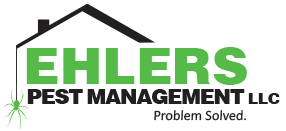 Stinging Insects
Stinging Insects
Stinging Insect Control in Southeastern Wisconsin
Get Effective Wasp, Hornet, & Bee Removal
Have wasps, hornets, bees, or yellow jackets at your home or business? Don't remove them yourself—call Ehlers Pest Management. Our pest control specialists can remove bothersome and dangerous stinging insects from your property with innovative eco-friendly solutions.
The Ehlers' safe approach to pest control exterminates stinging insects and prevents new nests from appearing, keeping the environment safe for you, your children, and your pets.
Don't put yourself at risk—let our exterminators handle the job. Contact Ehlers Pest Management for complete stinging insect control in Milwaukee, Kenosha, West Allis, and the surrounding areas. Take advantage of our limited-time offer of 10% off all new service plans.
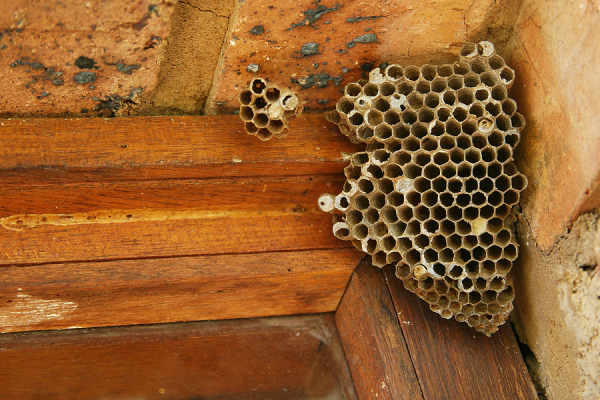

Why Choose EhlerS for Stinging Insect Control?
Our licensed exterminators will thoroughly inspect your home and yard to identify signs of insect activity. Once identified, we will recommend professional treatments to find which home protection pest control service is right for you. From nest removal to ultimate pest proofing, we have the full solutions to eradicate and prevent stinging insects from ruining your time outside. We also provide follow-up measures to ensure our wasp and bee removal services remain effective.
Stinging Insect Extermination Services From Ehlers
- Wasp removal
- Hornet extermination
- Bee extermination
- Yellow Jacket removal
How to Identify Stinging Insects
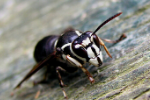

The bald-faced hornet is bluish-black with easily distinguished white spots on its face, thorax and abdomen. They are usually about 1 inch long. They will occasionally build nests on the sides of homes and are extremely protective of them, aggressively stinging any human or animal intruder who poses a threat.


The bumblebee is black with yellow stripes on the thorax and abdomen, growing up to 1 inch long. Bumblebees live in colonies, preferring to nest under porches and cement stoops, though occasionally nesting in walls, firewood, and sheds.
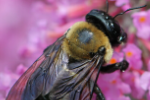

The carpenter bee is black with yellow markings and a robust 1-inch long shape. Outdoors, carpenter bees make nests in logs, dead tree limbs, decks, fences, and window sills. They are named after their tendency for chewing perfect holes in bare wood to make a nest for their young.
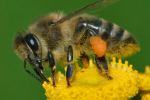

Honeybees are golden-yellow with dark brown bands around a ½ inch long body. Honeybee nests are often found in chimneys, attics, or crawl spaces. Swarms can be found amassed on buildings, fence posts, and tree branches. Though the large swarms are frightening, honeybees are docile and passive unless disturbed or threatened.
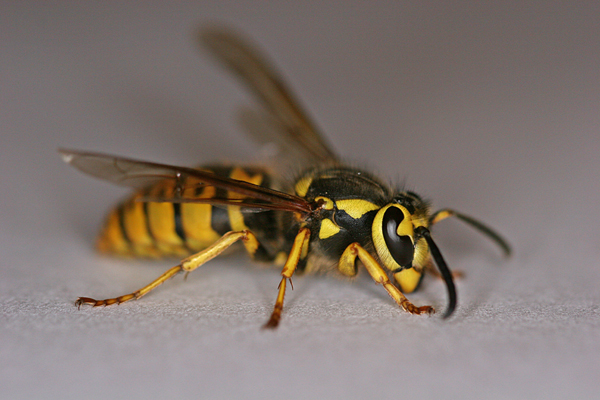

Though often mistaken for bees, yellow jackets are actually small wasps with black and yellow stripes, measuring between ½ to 1 inch long. A difficult Yellow Jacket problem is when they nest inside an attic, a chimney, or, worse yet, inside the wall of a home. Because the insects in a nest inside a wall actually think they are in the ground, they will chew at the drywall and eventually break through. So, if you hear scratching or buzzing sounds from inside a wall at your house, our professional exterminators will assess the situation and determine the most effective method for eliminating the infestation. It may involve using a vacuum trap, opening the wall to remove the nest, or spraying inside the wall with a non-toxic pyrethrum aerosol made from chrysanthemum flowers.
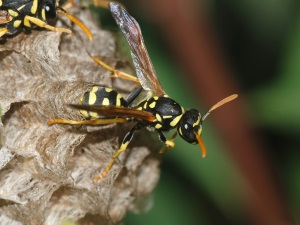

Wasps have many species (cicada killers and mud daubers), ranging in color from reddish-brown to dark red and orange. Some wasp species have bright red and yellow stripes. Depending on species, wasps range in size from ½ an inch to 1.5 inches long. Wasps prefer to nest beneath soffits and decks, in the corners of windows, and under awnings and porches. Wasps like to nest in sheltered areas like hose reels, electrical boxes, attics, crawl spaces, and gas grills. Wasps are carnivorous predators feeding on spiders, caterpillars, and other insects.
For more identification tips, check out our pest identifcation guide.

3 Signs You May Have a Wasp Nest
- Swarming wasps: The first sign of a wasp nest on your property is large numbers of stinging insects swarming around one particular area, often outside.
- Buzzing sounds: Sometimes, the presence of a wasp nest may not be visually evident, but you can still identify an intrusion by the sounds of buzzing concentrated in a specific area. This clue can help you determine the proximity of the nest and the need for further investigation.
- Seeing the Nest: Wasp nests are distinctive and have unique characteristics. They can grow to be quite large and are often made of papery walls constructed from chewed wood. Look for round or oval-shaped nests hanging from trees, walls, eaves, or even inside structures like homes or sheds.
Milwaukee's Go-To Bee & Wasp Removal Services
Don’t take our word for it, your neighbors have relied on Ehlers for a safer, cleaner home and business. Check out our reviews! At Ehlers, our focus is always to fully exterminate pests once and for all. You'll receive a solution custom to your situation without any of the nonsense other pest companies like to throw at you. With automated billing, digitized and detailed reports, world-class software, and real-time reporting, we make the pest control process as straightforward as possible.
We provide the removal of stinging insects in properties across Southeastern Wisconsin, including in Franklin, Glendale, Kenosha, Milwaukee, Muskego, New Berlin, Oak Creek, Racine, Waukesha, Wauwatosa and beyond.
Contact Ehlers' Pest Management of Wisconsin today for the removal of bees, wasps, hornets, yellow jackets, and more!
